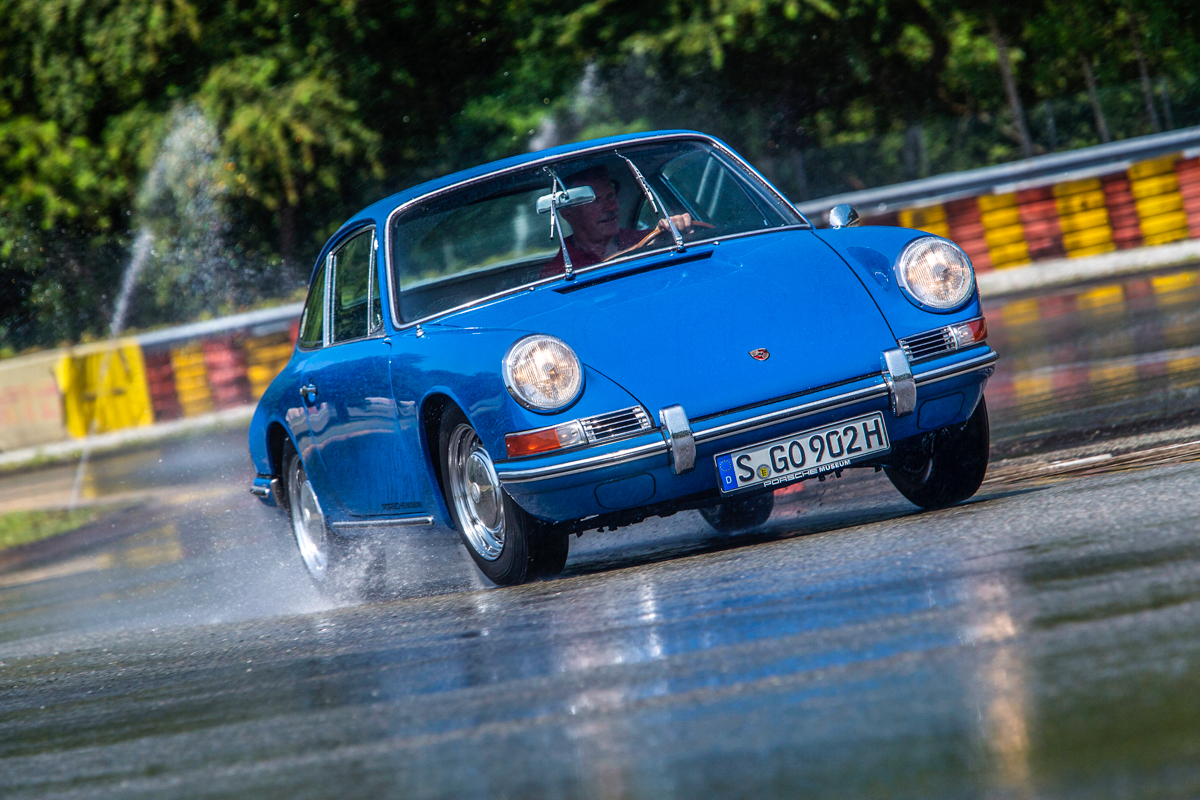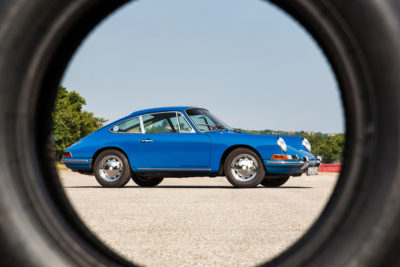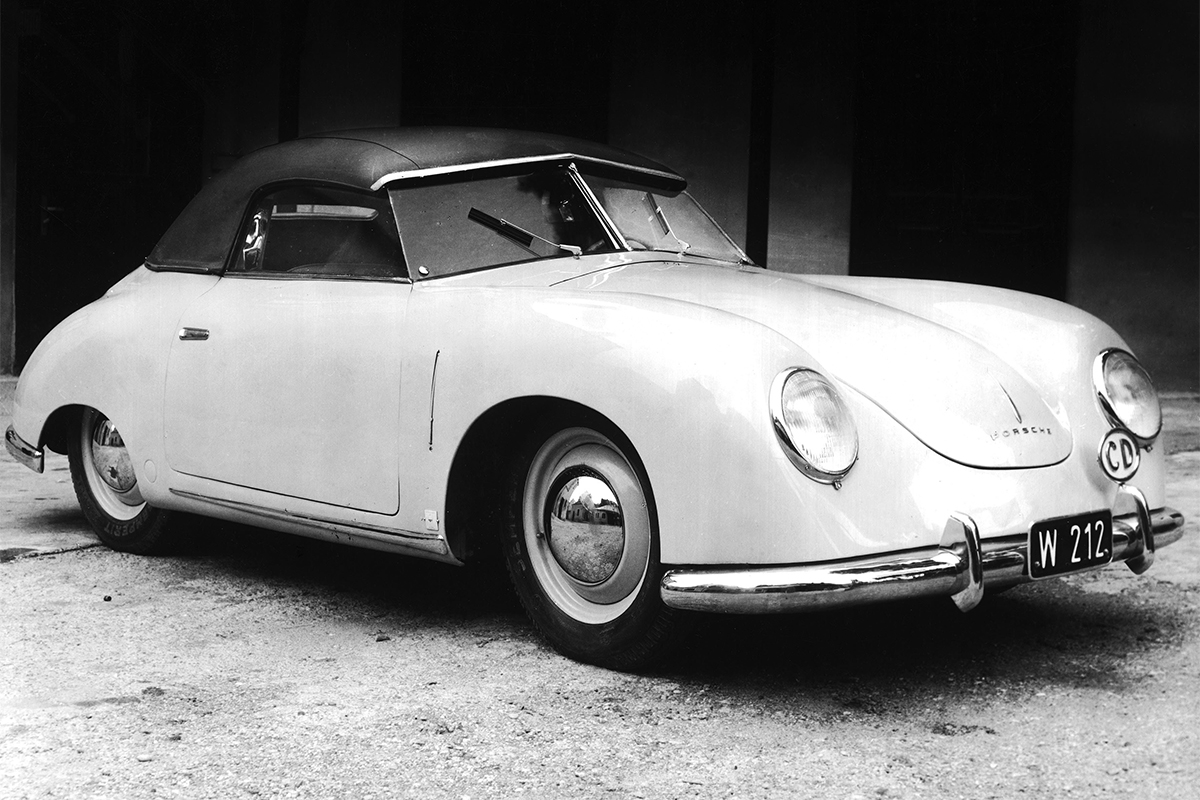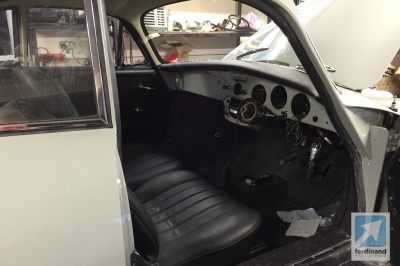
by John Glynn | Apr 22, 2016 | Classic Porsche Blog, Modified Porsche Hot Rods
Porsche has just added a bunch of new N-rated tyres to its list of approved rubber for older Porsche sports cars. The fact that Stuttgart’s release considers anything pre-2005 as classic is something we’ll gloss over for now – not going there on a Friday afternoon.
Porsche N-rated Tyres on Classic 911s
The Porsche tyre N-rating system is a subject of much discussion amongst classic 911 owners: probably in the top three conversation starters along with “what oil should I use?” and “I once turned down a 964RS for £20 and a half-eaten steak and kidney pie.” Not fitting N-rated tyres to your old Porsche won’t make it fail the MOT or invalidate your insurance, but there may be some comfort in fitting tyres which Porsche has tested on your classic. It also leaves you with plenty of headspace to worry about the engine going bang or whatever people worry about these days.

Pirelli, Continental, Michelin and Bridgestone all have rubber on the latest classic Porsche N-rated tyre list. As impact bumper 911s are closest to my heart, it’s nice to see that Continental Sport Contact tyres continue to be available in 205/55 and 245/45 ZR16 for 7- and 9-inch Fuchs wheels as fitted to my Carrera 3.0 (albeit the Sport Contacts on my car at present are not N rated). For those who follow a Porsche-approved lifestyle, 959 owners are stuck with Bridgestone RE71s (plenty noisy at 80dB), 964RS drivers have a better choice of Sport Contacts, Michelin Pilot Sport 2, Pirelli P Zero Rosso or Trofeo R compounds, while 924 Turbo drivers have the Sport Contact, Pilot Exalto 2 or P Zero Rosso to choose from.
Porsche Tyre Test Drivers
Porsche invited Walter Röhrl along to help with approvals, the former World Rally champion offering input based on a long history of driving classic Porsche models. Many of the current works drivers also have a classic 911 tucked away somewhere – would be interesting to see one of them drifting a pre-’73, abusing a set of N-rated tyres (Pirelli CN36 or P6000 if you must have the N). It is also interesting to see Walter leaning on a pair of P7Rs (sexiest tread pattern ever IMO) but those tyres are not on the Porsche approved list as far as I can see: P7 Cinturatos yes, but not P7Rs.

“The driving properties in the early years were not as full or balanced as they are today,” says Walter. “The new generation of tyres is more fitting than ever to the driving style of a challenging sports car.” Porsche tyre tester, Dieter Röscheisen, said of the newly-approved tyres: “The new tyre releases will make it possible for classic models to follow the curve into the modern era with exceptionally good and balanced driving properties.” (I imagine it is more likely that a PR person said this. My hope is that Dieter was overexcited after spending an afternoon shredding 993 RS rear tyres and couldn’t elucidate.)

I don’t have N-rated tyres fitted to any of my five old Porsches. It doesn’t bother me in the slightest, as my cars are eternal works-in-progress and only one of the Porsches is currently road legal (a classic 2004 SUV model). I have a set of part-worn 205/55 16 Bridgestones for the 924 Turbo, which will be next to go on the road. I like Sport Contacts on the 911, but tend to lean toward Michelins as my overall tyre brand of choice: they drive so well, right down to the wear bars. All that will go out the window if you can now get P7Rs to fit the 911, as they are soooo s-e-x-y.
Track day fans on my 911 forum at impactbumpers.com use a load of different non-N-rated tyres on long road trips and pretty intense driving conditions and no big problems reported there. Bridgestone S-02s have long been a good choice for spirited ’74-’89 911 driving if you can get a set to suit: you can still buy 205/55 and 225/50 16s in Porsche N3 rating from places like Camskill, but I don’t think 245s are easily available.

by John Glynn | Dec 18, 2015 | Classic Porsche Blog, Market & Prices, Modified Porsche Hot Rods
I’m working outside the UK at the minute, catching some winter sun in Fuerteventura. As ever, I’ve brought a few books along in case of long lunches, including ‘We are Porsche’: Ferry Porsche’s first autobiography, written with John Bentley in the early 1970s.
I’ve read this book many times, as Ferry’s words both inspire and encourage. All freelancers face constant changes and challenges, which can often feel insurmountable. Ferry’s story demonstrates that, no matter what life throws in one’s path, patient perseverance will find a solution. Hard work and the occasional retreat to simple pleasures can power body and mind through tough situations.
Ferry Porsche and his BMW Motorcycle
As a young man, one of Ferry’s simplest pleasures was motorcycling. At the age of eighteen, Ferry got his motorcycle licence and shares how the independence of increased mobility brought new opportunities to meet girls. “I no longer had to rely on the family car to get me from one place to another in a hurry,” he recalls. “The motorbike I then used was a 500cc BMW and this proved useful in more ways than one.”

This would have been circa 1927, making Ferry’s bike an R42: Max Fitz’s blueprint for just about every BMW road bike made afterwards. Pristine R42s now sell for big money – £40k or more – so Ferry’s mount was well chosen. Given Doctor Porsche’s interest in BMW motorcycles, I wonder what he’d make of the machine seen here, being offered by Bonhams at its Paris sale on February 4th: a 1952 Sunbeam S8, with Ferry Porsche power.
BSA bought the rights to Sunbeam’s motorcycle business in 1943 and revived the brand after the war, when it was given German motorcycle designs as part of the war reparations. Based on the BMW R75, the Sunbeam S7 had a pre-war-designed inline twin which left it low on power, and its successor, the Sunbeam R8 was apparently not much better.
Porsche Engine in a Motorcycle Frame
In 1969, the then owner of this S8 decided to upgrade the power with a 1200cc motor from a Volkswagen Beetle. This was not the ultimate incarnation, as he subsequently ditched the Beetle engine, replacing it with a 1955 1300cc Porsche motor featuring bespoke cast aluminium bellhousing and rocker covers.

The Sunbeam’s first outing was to the 1972 BMF show, where it caused a sensation. MCN’s John Ebbrell tested the bike for the paper, and the Sunbeam was also shown at Olympia, fitted with Amal concentric carburettors a la Triumph and others. A BMW tank was added later, along with Norton Roadholder forks and some other cool touches, including a Vincent Black Shadow speedometer.
For sale due to the advancing age of its owner, the Sunbeam was offered at Bonhams’ last sale in the RAF Museum at Hendon where it failed to find a new home. Given that the price aspirations seem sensible (£9.5k), I was surprised by this, so I emailed Bill To at Bonhams to get his thoughts on why such an interesting piece failed to sell.”We were a little surprised ourselves, but I guess that’s the nature of public auctions: we just don’t know what to expect on the day,” said Bill.
I’m not the world’s biggest vintage bike fan, but I do like this. If it’s something you are also inspired by, get yourself to Paris on February 4th, or contact Bonhams to register as a bidder. I want a ride if you buy it!

by John Glynn | Oct 13, 2015 | Classic Porsche Blog, Porsche News
I love a good art gallery or museum exhibition. Hamburg’s Prototyp Museum has just announced something special for fans of the Porsche 356 and early Porsche heritage: the ‘Very Important Porsche 356’ exhibition from November 13, 2015.
Twelve of the most important Porsche 356s will be shown at the wonderful Hamburg Automuseum, including the oldest-known German manufactured 356. Of course, an Austrian-built Gmünd Coupe also forms part of the exhibition, as well as two early pre-Stuttgart Convertibles: a 1949 356/2 Beutler Convertible and a 356/2 Keibl Convertible from the same year.
Three Gmünd Porsche 356s at Hamburg Prototyp Museum
While the museum has gathered twelve 356s in total for this exhibition, the trio of early Porsche 356s alone should attract a number of visitors, keen to see three early Gmünd-built cars in one place. I can’t think of anywhere these three rare cars would have been gathered together at once in the last five years, so new arrivals to the world of classic Porsche will find these cars fascinating.
For my money, nothing sings more of undiluted Porsche DNA than these very early 356s, pieced together by hand in a converted Austrian sawmill, nestled in the foothills of the Central Eastern Alps. Ferry Porsche wasted no time after the end of the war in making his dream of Porsche-produced sports cars a reality. Every ounce of Ferry’s passion – a passion that was shared by the great team around him – sings from the aluminium bodywork of each of these cars in a hymn of devout inspiration.

Porsche 356 Gmund Styling
Once Porsche 356 production moved to Stuttgart in 1950, the bodies were stamped out in steel and much of that precious Gmünd styling was lost including the low, narrow roofline and the careful detailing through the front end. Photos never do these cars justice: you have to stand beside a Gmünd car to experience all of what they communicate. To me, the 356/2 Keibl Convertible built by Karosseriefabrik Ferdinand Keibl in Vienna (top pic) is one of the most beautiful road cars ever built: small wonder that Ferry was also a great admirer, and bought the only surviving example back for his personal collection.
Perhaps the most surprising part of this exhibition to those unfamilar with the very first cars produced by the genius Ferry Porsche will be the colour and sharpness of an early 356. We’re so conditioned to seeing these Porsches in grainy old black and white photos, that we expect the reality to be monochrome paintwork and workaday VW plastic on the dashboard, and tend to ignore opportunities to get close to these cars as a result.
I am always quite taken aback by the joy with which these cars were built and finished. Some of the colours are simply incredible and the shapeliness of the early 356s is quite honestly mesmerising from almost every angle. The crispness of a coachbuilt convertible top removes any thought that new cars rule for quality and the elegant palette of colours across bodywork, trim and soft tops is just beautiful. I encourage you to go along to Hamburg for a day while the exhibition is open from November 13 to March 27, 2016. Entry is only €13.50 and the museum is well worth the journey.
The cars of the Very Important Porsche 356 exhibition:
- 1949 Porsche 356/2 Beutler Convertible
- 1949 Porsche 356/2 Keibl Convertible
- 1949 Porsche 356/2 Gmünd Coupe
- 1950 Porsche 356 Chassis 5006
- 1951 Porsche 356 Gläser Convertible
- 1952 Porsche 356 America Roadster
- 1953 Porsche 356 1500 S USA de Luxe Convertible
- 1957 Porsche 356 A 1500 Carrera GT Speedster
- 1960 Porsche 356 B 1600 Carrera GTL Abarth
- 1963 Porsche 356 B 2000 GS-GT „Dreikantschaber“
- 1964 Porsche 356 C 2000 GS Carrera 2
- 1964 Porsche 356 C 1600 SC Polizei Convertible

by John Glynn | Feb 8, 2015 | Classic Porsche Blog, Project Cars
This smart Porsche 356 Carrera 2 is currently going back together following a forty-year spell as a project car. Owned by the right reverend Francis Tuthill, the main man took it apart in the 1970s when it had a bit of rust in the sills. It’s taken a mere four decades to find time to put it back together.
Before the 356 boys chime in with a million questions, I don’t have all the details to hand at present: it was a flying visit en route to somewhere else when Francis grabbed me with the usual: “you don’t want to be taking pictures of that. I’ll show you the real story.” One does not refuse such offers.

I hear this car is one of four right-hand drive cars manufactured: other sources reckon there were six. This is not Fran’s only four-cam project and it is going back together to be driven, although I don’t quite know where to at the minute. I’ll definitely be blagging a spin in it when done.

The Carrera 2 remains a rare bird, especially in right-hand drive. Fuhrmann’s four-cam engine reached its peak here in the Type 587 version: 1966cc of revvy flat four, delivering around 130 bhp.

The engine is shown here in a stand, which is where most servicing must be done with the four-cams. Wider than the normal engines, these four-cams come out when its time to do the plugs: hence why Francis called me down for a look. “You won’t see a thing when this is back in the car.”

I do like the Porsche 356. It still has such a great shape and Carreras were right on the pace of the early 911s: one reason there was so much dissent when the 356 was displaced by the new boy. Driving a ‘regular’ 356 is easy, relaxed, evocative. Light, direct steering and a welcoming cabin makes a very comfortable environment for mile after mile. How much it changes with a four-cam, I hope to report sometime soon.

by John Glynn | Jan 15, 2015 | Art and Books, Classic Porsche Blog
Fellow 911 owner, artist Nicolas Hunziker, has just uploaded another “can you guess what it is yet?” Porsche painting to Youtube.
The first few minutes had me waiting for something discernable, then a 356 hove into view, then I thought I saw something else: surely Nicolas can’t be painting a water-cooled car. The end result is special and was very familiar – reminded me of a press photo maybe? Something I had seen before. The final dénouement was obvious.
Porsche Unexpected with Nicolas Hunziker
The book Porsche Unexpected was released last year. Telling the story of the incredible Ingram Collection, I bought two copies: one for me and one for a friend’s birthday. I had them both shipped to his house in California and not been able to get there to read my copy yet, but I hear it is very good. I’ll let you know!
Check out Nicolas’ interesting video below. These movies are fun but can be longer than you think (this is art, not speed art), so allow some time to enjoy the experience. Ciao!















